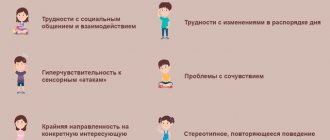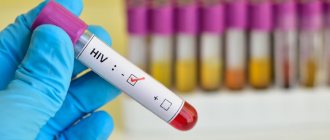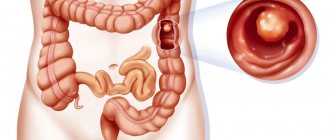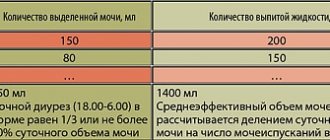Medication is an important part of managing symptoms of attention deficit hyperactivity disorder. However, parents often worry that medications may affect their child's character or make them addicted. The choice of appropriate drugs, as well as their possible side effects, entails many questions. Let's try to figure out what medications are for ADHD and how to use them as effectively and safely as possible for the patient.
First of all, we note that no drug can completely get rid of this diagnosis, but it can relieve symptoms and significantly improve the general condition, behavior, and learning ability. The most commonly prescribed medications for ADHD are psychostimulants. Scientists have found that they are the most effective way to treat attention deficit hyperactivity disorder. Stimulants help increase the level of certain neurotransmitters, those “intermediaries” between brain neurons that are responsible for attention, concentration, and action planning. These medications help your child concentrate better and ignore distractions. Different drugs are registered and approved for use in different countries for the treatment of ADHD. Stimulants are completely prohibited in Russia, as well as in a number of other countries - Thailand, Oman, Yemen. In most European countries, the USA, Turkey, Brazil, Argentina, Israel, most stimulant drugs are allowed.
Composition and release form
| Capsules 10 mg | 1 caps. |
| atomoxetine hydrochloride (equivalent to atomoxetine) | 10 mg |
| excipients: dimethicone, pregelatinized starch | |
| capsule shell composition: titanium dioxide, sodium lauryl sulfate, gelatin |
in contour cell packs of 7 or 14 pcs.; in a cardboard pack 1 or 2 (14 pcs.) packages.
| Capsules 18 mg | 1 caps. |
| atomoxetine hydrochloride (equivalent to atomoxetine) | 18 mg |
| excipients: dimethicone, pregelatinized starch | |
| capsule shell composition: titanium dioxide, sodium lauryl sulfate, gelatin, yellow iron oxide dye |
in contour cell packs of 7 or 14 pcs.; in a cardboard pack 1 or 2 (14 pcs.) packages.
| Capsules 25 mg | 1 caps. |
| atomoxetine hydrochloride (equivalent to atomoxetine) | 25 mg |
| excipients: dimethicone, pregelatinized starch | |
| capsule shell composition: titanium dioxide, sodium lauryl sulfate, gelatin, indigo carmine dye |
in contour cell packs of 7 or 14 pcs.; in a cardboard pack 1 or 2 (14 pcs.) packages.
| Capsules 40 mg | 1 caps. |
| atomoxetine hydrochloride (equivalent to atomoxetine) | 40 mg |
| excipients: dimethicone, pregelatinized starch | |
| capsule shell composition: titanium dioxide, sodium lauryl sulfate, gelatin, indigo carmine dye |
in contour cell packs of 7 or 14 pcs.; in a cardboard pack 1 or 2 (14 pcs.) packages.
| Capsules 60 mg | 1 caps. |
| atomoxetine hydrochloride (equivalent to atomoxetine) | 60 mg |
| excipients: dimethicone, pregelatinized starch | |
| capsule shell composition: titanium dioxide, sodium lauryl sulfate, gelatin, yellow iron oxide dye, indigo carmine dye |
in contour cell packs of 7 or 14 pcs.; in a cardboard pack 1 or 2 (14 pcs.) packages.
Description of the dosage form
Capsules 10 mg
- hard gelatin, size No. 3, opaque, white/white, with a dosage of “10 mg” and identification code “Lilly 3227” applied.
Capsules 18 mg
- hard gelatin, size No. 3, opaque, yellow/white, with the dosage “18 mg” and the identification code “Lilly 3238” applied.
Capsules 25 mg
- hard gelatin, size No. 3, opaque, blue/white, with a dosage of “25 mg” and identification code “Lilly 3228” applied.
Capsules 40 mg
- hard gelatin, size No. 3, opaque, blue/blue, with a dosage of “40 mg” and identification code “Lilly 3229” printed.
Capsules 60 mg
- hard gelatin, size No. 2, opaque, blue/yellow, with a dosage of “60 mg” and identification code “Lilly 3239” applied.
Capsule contents
- white to almost white powder.
Pharmacodynamics
Atomoxetine is a highly selective, potent inhibitor of presynaptic norepinephrine transporters. Atomoxetine has minimal affinity for other noradrenergic receptors or other neurotransmitter transporters or receptors.
Atomoxetine is not a psychostimulant and is not an amphetamine derivative. In clinical studies, when discontinuing the drug, there was no increase in symptoms of the disease or any adverse events associated with withdrawal syndrome.
Pharmacokinetics
Suction.
After oral administration, atomoxetine is rapidly and almost completely absorbed, reaching Cmax in plasma in approximately 1–2 hours. Atomoxetine is prescribed regardless of meals or with meals.
Distribution.
Atomoxetine is well distributed in the body. It has a high affinity for plasma proteins, primarily albumin.
Metabolism.
Atomoxetine undergoes primary metabolism with the participation of the CYP2D6 isoenzyme. The main oxidized metabolite formed, 4-hydroxyatomoxetine, is rapidly glucuronidated. In terms of pharmacological activity, 4-hydroxyatomoxetine is equivalent to atomoxetine, but circulates in plasma in much lower concentrations.
Although 4-hydroxyatomoxetine is primarily formed by CYP2D6, in people with insufficient CYP2D6 activity, 4-hydroxyatomoxetine can be formed by some other cytochrome P450 isoenzymes, but more slowly.
Atomoxetine does not inhibit or enhance the CYP2D6 cycle.
Excretion.
The average T1/2 of atomoxetine after oral administration is 3.6 hours in patients with pronounced metabolism and 21 hours in patients with reduced metabolism. Atomoxetine is primarily excreted in urine as 4-hydroxyatomoxetine-O-glucuronide.
Pharmacokinetics in special clinical situations
Pharmacokinetics in children and adolescents is similar to pharmacokinetics in adults. The pharmacokinetics of atomoxetine in children under 6 years of age has not been studied.
Can a child become addicted to a stimulant?
Psychostimulants are classified as addictive drugs. However, some research suggests that taking a stimulant to treat ADHD may actually reduce the risk of substance abuse during adolescence, rather than increase it.
But children and teenagers are still at risk of abusing their medications. If abused, they take it in higher doses to achieve a strong effect. To avoid these risks, keep the medication in a safe place, monitor the medication, and, if possible, have school staff monitor your child's medication while at school.
Contraindications
hypersensitivity to the drug;
severe heart damage;
simultaneous use with MAO inhibitors;
angle-closure glaucoma.
Carefully
the drug should be used in patients with arterial hypertension, tachycardia, cardiovascular diseases, severe physical overload, concomitant use of psychostimulants, sudden cardiac death in a family history, cerebrovascular accident, history of seizures, as well as in conditions that can lead to arterial hypotension.
Side effects
Children and teenagers
From the digestive system:
very often (>10%) - abdominal pain (18%; including symptoms of abdominal discomfort, pain and discomfort in the epigastrium, discomfort in the stomach), loss of appetite (16%), vomiting (11%); often (1–10%) - constipation, dyspepsia, nausea (9%), anorexia. These adverse reactions are temporary and, as a rule, do not require discontinuation of the drug. Due to decreased appetite, some patients experienced a decrease in body weight at the beginning of treatment (on average about 0.5 kg), weight loss was greater at higher doses. After an initial decrease in body weight, patients taking Strattera experienced a slight increase in body weight with long-term therapy. Growth indicators (weight and height) after two years of treatment were close to normal.
Nausea (9%) and vomiting (11%) are most likely to occur during the first month of treatment, are usually mild to moderate, are temporary, and do not cause discontinuation of treatment in a significant number of cases.
From the cardiovascular system:
(0.1–1%) - palpitations, sinus tachycardia.
In placebo-controlled studies, children receiving Strattera experienced a mean increase in heart rate of 6 beats/min and a mean increase in SBP and DBP of 2 mmHg. compared to placebo.
Patients receiving atomoxetine experienced orthostatic hypotension (0.2%, n=7) and syncope (0.8%, n=26), due to its effect on noradrenergic tone.
From the side of the central nervous system:
very often (>10%) - drowsiness (including sedation); often (1–10%) - irritability, mood swings, dizziness; sometimes (0.1–1%) - early morning awakening.
From the side of the organ of vision:
often (1–10%) - mydriasis.
Dermatological reactions:
often (1–10%) - dermatitis, rash; sometimes (0.1–1%) - itching.
Other:
often (1–10%) - flu, fatigue, weight loss; sometimes (0.1–1%) - weakness.
Side effects in patients with slow metabolism of CYP2D6 substrates, observed in 2% of cases and 2 times more often, and also statistically significantly more often than in patients with rapid metabolism of CYP2D6 substrates: tremor (5.1 and 1.1%, respectively) , fainting (2.1 and 0.7%, respectively), conjunctivitis (3 and 1.5%, respectively), early morning awakening (3 and 1.1%, respectively), mydriasis (2.5 and 0.7%, respectively) .
Adults
In adults, the most common side effects associated with taking atomoxetine were the gastrointestinal and urogenital tract. No serious adverse events were observed during short or long-term treatment with atomoxetine.
From the digestive system:
very often (>10%) - loss of appetite, dry mouth, nausea; often (1–10%) - abdominal pain (including symptoms of abdominal discomfort, pain and discomfort in the epigastrium, discomfort in the stomach), constipation, dyspepsia, flatulence.
From the side of the central nervous system:
very often (>10%) - insomnia (includes difficulty falling asleep and sleep disturbances in the middle of the night); often (1–10%) - decreased libido, dizziness, impaired sleep quality, sinus headache; sometimes (0.1–1%) - early morning awakening.
From the cardiovascular system:
often (1–10%) - flushing of the face, palpitations, tachycardia; sometimes (0.1–1%) - a feeling of cold in the lower extremities; very rarely (<0.01%) according to spontaneous (post-marketing reports) - peripheral vascular reactions and/or Raynaud's syndrome and the risk of recurrence of Raynaud's syndrome.
In placebo-controlled studies, adults treated with Strattera experienced a mean increase in heart rate of 6 beats/min and a mean increase in sBP (about 3 mmHg) and dBP (about 1 mmHg) compared to placebo.
From the urinary system:
often (1–10%) - dysuria, difficulty urinating.
From the reproductive system:
often (1–10%) - dysmenorrhea, ejaculation disorders, lack of ejaculation, erectile dysfunction, erectile dysfunction, menstrual irregularities, orgasm disorders; very rarely (<0.01%), according to spontaneous (post-marketing) reports, painful or prolonged erection.
From the skin and subcutaneous tissue: often (1–10%) - dermatitis, increased sweating.
Other:
often (1–10%) - weakness, drowsiness, chills, weight loss.
Side effects of ADHD medications
Stimulants can have side effects, but these tend to occur early in treatment. They usually pass quickly and in a mild form. The most common ones are:
- decreased appetite or weight loss;
- sleep problems (long-acting medications have a greater impact on sleep and appetite);
- headaches, abdominal pain;
- irritability, tics.
Psychostimulants generally do not affect growth, but they may slow or delay growth during the first two years of treatment.
In rare cases, ADHD medications can cause more dangerous side effects. For example, some stimulants increase the risk of heart and blood vessel problems. Existing mental disorders such as depression, anxiety or psychosis may worsen. It is also known that the use of drugs in the form of skin patches causes discoloration of the skin in the areas that are under the patch.
How to avoid side effects? Before your child starts taking any medications, talk to your doctor about your child's medical history and any medical conditions that run in your family to help predict the risk of some side effects. You should also tell the doctor about any other medications or vitamins your child is taking.
In most cases, side effects can be managed if your doctor helps you:
- change the dose of the medicine;
- adjust the time and frequency of reception;.
- prescribe another medicine.
It is important to remember: you cannot change the order of administration and dosage of the drug in any way without consulting your doctor. Such rash changes can lead to dangerous side effects.
It is recommended to start taking medications for ADHD only in cases where other treatments have been ineffective. Read about non-drug treatment methods for ADHD here
Interaction
With simultaneous use of Strattera with β2-adrenergic receptor agonists, their effect on the cardiovascular system may be enhanced (use this combination with caution). In healthy adult volunteers, the effect of salbutamol in a standard inhaled dose of 200 mcg on hemodynamic parameters was insignificant compared with the effect of the indicated dose of this drug when administered intravenously. Simultaneous use of atomoxetine at a dose of 80 mg/day for 5 days did not lead to an increase in these effects of salbutamol. Heart rate after repeated inhalations of salbutamol at a dose of 800 mcg was characterized by similar values in both monotherapy and in combination with atomoxetine.
Co-administration of atomoxetine with drugs that cause prolongation of the QT interval (neuroleptics, antiarrhythmics, moxifloxacin, erythromycin, tricyclic antidepressants, lithium carbonate), as well as with drugs that cause electrolyte imbalance (diuretics), and CYP2D6 inhibitors, increases the risk of prolongation of the QT interval.
Atomoxetine does not cause clinically significant inhibition or induction of isoenzymes of the cytochrome P450 system, including CYP1A2, CYP3A, CYP2D6 and CYP2C9. In patients with extensive metabolism of CYP2D6 substrates, CYP2D6 inhibitors increase the plasma CSS of atomoxetine at steady state to a level similar to that in patients with poor metabolism of CYP2D6 substrates.
Based on in vitro
It is assumed that the administration of cytochrome P450 inhibitors to patients with poor metabolism of CYP2D6 substrates does not increase the concentration of atomoxetine in the blood plasma. For patients using CYP2D6 inhibitor drugs, gradual titration of the dose of atomoxetine is recommended.
Due to the possible effect on blood pressure, Strattera should be used with caution when combined with drugs that affect blood pressure.
Drugs that increase the pH of gastric juice (magnesium hydrochloride/aluminum hydroxide, omeprazole) do not affect the bioavailability of atomoxetine.
Drugs that affect the secretion of norepinephrine should be prescribed with caution simultaneously with atomoxetine (due to the possibility of synergism (increased) pharmacological effect).
Atomoxetine does not affect the binding of warfarin, acetylsalicylic acid, phenytoin and diazepam to plasma albumin.
Caution is required when using atomoxetine simultaneously with drugs that lower the threshold of convulsive activity (antidepressants, antipsychotics, mefloquine, tramadol).
Directions for use and doses
Inside,
regardless of meals or during meals, 1 time/day, in the morning.
Treatment should be carried out under the supervision of a physician experienced in working with patients with attention deficit hyperactivity disorder.
In case of adverse events when taking the drug once a day, patients can be recommended to take it twice a day, dividing the dose into a morning dose and a late afternoon or early evening dose.
Discontinuation of the drug does not require a gradual dose reduction.
For children and adolescents weighing up to 70 kg, the recommended initial daily dose is approximately 500 mcg/kg and increased to a therapeutic daily dose of approximately 1.2 mg/kg no earlier than after 3 days. If there is no improvement in the patient's condition, the total daily dose can be increased to a maximum dose of 1.8 mg/kg no earlier than 2-4 weeks after starting the drug.
The recommended maintenance dose is approximately 1.2 mg/kg/day. The recommended maximum daily dose is 1.8 mg/kg or 120 mg.
In children and adolescents weighing up to 70 kg, the safety of single and total daily doses exceeding 1.8 mg/kg has not been systematically assessed.
For children and adolescents weighing more than 70 kg, as well as adults, the recommended initial daily dose is 40 mg and is increased to a therapeutic daily dose of about 80 mg no earlier than after 3 days. If there is no improvement in the patient's condition, the total daily dose can be increased to a maximum dose of 120 mg no earlier than 2-4 weeks after starting the drug.
The recommended maintenance dose is 80 mg. The recommended maximum daily dose is 120 mg.
In children and adolescents weighing more than 70 kg, as well as in adults, the safety of a single dose of more than 120 mg and a total daily dose of more than 150 mg has not been systematically assessed.
In patients with moderate hepatic impairment (Child-Pugh class B), the initial and maintenance therapeutic dose should be reduced to 50% of the usual recommended dose. In patients with severely impaired liver function (class C on the Child-Pugh scale), the initial and maintenance therapeutic dose should be reduced to 25% of the usual dose.
In patients with severely impaired renal function (end-stage chronic renal failure), atomoxetine is eliminated from the body more slowly than in healthy individuals. However, no differences were noted with dose adjustment. Therefore, Strattera can be prescribed to patients with ADHD with chronic renal failure, including end-stage disease, using the usual dosing regimen. Atomoxetine may cause hypertension in patients with end-stage renal disease.
Rules for using capsules
Strattera capsules are not intended to be opened. Atomoxetine causes eye irritation. If the contents of the capsule get into your eyes, rinse them immediately with water and consult a doctor. Hands and contact surfaces must be washed with water.
Attention deficit hyperactivity disorder in children: diagnosis and treatment
The medical and social significance of the problem of attention deficit hyperactivity disorder (ADHD) is extremely high, as a result of which this condition is in the sphere of professional interests not only of child neurologists, psychiatrists and pediatricians, but also teachers and psychologists [1–5].
The Russian-language name ADHD is an adapted version of the English-language term “attention deficit/hyperactivity disorder”. ADHD is a widespread condition among children reaching preschool and school age. The fact that ADHD is not a disabling disease does not mean that it does not require treatment.
ADHD is the name given to an etiologically heterogeneous group of behavioral disorders in children over 5 years of age. These behavioral changes are accompanied by impaired attention and hyperactivity (in children over five years of age), potentially leading to academic failure (learning disorders), antisocial behavior, and decreased quality of life [1–5]. Currently, the neurobiological nature of ADHD has been established, and its pathogenesis has been partially studied.
According to modern concepts, genetic mediation of ADHD is characteristic of 40% to 75% of cases of the disease [1, 2]. The biochemical substrate in the pathogenesis of ADHD is disturbances in catecholamine metabolism. Environmental exposure and the influence of other factors (prematurity, low birth weight, maternal smoking during pregnancy, etc.) are recognized, but considered less significant [2].
According to Zuddas A. et al. (2005), psychosocial environmental factors interact with genetic predisposition to ADHD to cause biological damage [6]. ADHD can be considered as an outcome of perinatal damage to the nervous system or a defect in the formation of behavioral stereotypes in children with disorders of psychomotor development. In the first case, there are environmental influences of the intrauterine environment (including hypoxia, exposure to bacterial, viral and other pathogens on the fetus), and in the second, environmental factors play the main role in the postnatal life of the child.
Environmental factors that presumably influence the formation of ADHD can be roughly divided, firstly, into endogenous and exogenous, and secondly, into prenatal and postnatal. Prenatal factors for the formation of ADHD include the following: gestational (burdened obstetric and gynecological history, toxicosis, gestosis, threat of miscarriage, etc.), maternal smoking during pregnancy, birth trauma (obstetric), exposure of the fetus to infectious pathogens (viruses, bacteria, viral-viral and viral-bacterial associations), toxic effects on the fetus (heavy metals, intoxicants of plant and synthetic origin, etc.), intrauterine fetal hypoxia (acute and/or chronic), disorders of neurochemical and/or neurophysiological parameters of the central nervous system, Rh conflict (intrauterine formation of a stable titer of specific antibodies), intrauterine neuroinfections.
Postnatal factors in the formation of ADHD: prematurity, morphofunctional immaturity, intrauterine growth retardation (IUGR), artificial feeding, intranatal or postnatal anoxia/asphyxia/hypoxia, specific patterns of upbringing in the family, characteristics of individual temperament, nutritional deficiencies (vitamins, minerals, other nutrients) , imitative behavior of children, features of cerebral metabolism of various origins (dopamine, serotonin, glucose, etc.), morphometric features of the central nervous system (cerebellum, basal ganglia, other cerebral structures), dysfunction of the thyroid gland and other endocrine organs, toxic factors, emotional difficulties in relationships between parents, upbringing and living in non-family settings (“institutional”), as well as treatment of ADHD (drug or non-drug) [2]. There is an opinion that ADHD can develop as a result of excessive consumption of sugar, industrially produced foods and drinks containing large quantities of extractives, preservatives and dyes. The effect of watching many hours of TV programs from early childhood on ADHD is currently no longer considered a significant factor [2].
Many authorities in the field of studying ADHD recognize that with this pathology, children have a number of features of cerebral structures and functions (damage to the prefrontal-striato-thalamocortical structures). In ADHD, descending projections of catecholaminergic and serotonergic neurons are very likely to be involved in the pathological process.
The clinical manifestations of ADHD appear and change throughout an individual's life. ADHD is often part of a symptom complex that includes specific learning disabilities and other neurobiological disorders. Although ADHD was initially described as a disorder exclusively of childhood, it has now been confirmed that this condition can persist into adulthood [1, 2, 4–6].
American experts present the standards for diagnosing ADHD in the Diagnostic and Statistical Manual of Psychiatric Disorders (DSM-IV), where ADHD is divided into 3 types based on the patient’s behavioral characteristics (predominant attention-deficit type, predominantly hyperactive type, combined type). In the Russian Federation, it is customary to use the criteria not of DSM-IV, but of the International Classification of Diseases, Xth Revision (ICD-10), which have some differences (see below).
The classic triad of ADHD includes hyperactivity, impulsivity, and inattention (attention deficit). Hyperactivity manifests itself in children as an inability to sit still or concentrate on a task, while there is a visible presence of motor activity. Upon reaching adulthood, these patients are characterized by motor restlessness and a tendency to simultaneously perform several tasks without completing them. Impulsivity is determined by the difficulty of prioritizing and suppressing immediate responses to environmental factors that compete for attention with more significant activities and events. Inattention in children and adults is manifested in the inability to suppress one's own behavioral response to less significant stimuli in family, educational, work and social situations. As the nervous system matures, hyperactivity and impulsivity become less problematic for the individual, although inattention remains a problem for many adults and often manifests itself as impaired time management [1–6].
Concomitant (comorbid) conditions with ADHD may include: disorders of emotional control (affective - dysrhythmia, depression, bipolar disorders, anxiety, panic disorders, obsessive-compulsive); motor control disorders (tic - motor tics, vocal tics, Gilles de la Tourette syndrome; paroxysmal - usually primary generalized absence epilepsy; sleep disorders with periodic limb movements); disturbances in comfort (migraine-type headaches, enuresis, irritable bowel syndrome, etc.); disorders associated with the use of intoxicants (inhalants, tobacco, alcohol, narcotic drugs, etc.); disorders with disruptive (destructive) behavior (three types: oppositional defiant, conductive disorders, antisocial behavior) [1–6] (Table).
In this case, it is proposed to pay attention to a score of 3 points if it occurs 6 times or more, as well as to the total score (if it is 25 points or higher).
The ICD-10 diagnostic criteria for ADHD are as follows:
Inattention/Attention Deficit (requires at least 6 signs):
- Frequently failing to pay close attention to detail or making careless mistakes in school, work, or other activities;
- often fails to maintain attention on tasks or gaming activities;
- it is often noticeable that the child does not listen to what is said to him;
- the child is often unable to follow instructions or complete school work, daily routines, and work responsibilities (not due to oppositional behavior or inability to understand instructions);
- the organization of tasks and activities is often disrupted;
- often avoids or greatly dislikes tasks, such as homework, that require constant mental effort;
- often loses things needed to complete certain tasks or activities, such as school items, pencils, books, toys, or tools;
- often easily distracted by external stimuli;
- often forgetful during daily activities.
Hyperactivity (at least three signs required):
- often moves his arms or legs restlessly or fidgets in place;
- leaves his seat in a classroom or other situation that requires him to remain seated;
- often begins to run or climb somewhere when this is inappropriate (in adolescence or adulthood, only a feeling of anxiety may be present);
- is often inappropriately noisy in games or has difficulty spending leisure time quietly;
- a persistent nature of excessive motor activity is revealed, which is not significantly influenced by the social situation and requirements.
Impulsivity (at least one trait required):
- often blurts out answers before questions are completed;
- often unable to wait in lines or wait their turn in games or group situations;
- frequently interrupts or interferes with others (for example, in other people's conversations or games);
- often talks too much without adequately responding to social restrictions.
Symptoms depend on which type of ADHD you have. The diagnosis is established on the basis of characteristic complaints (from parents) and registration of signs of existing disorders (according to the criteria of the current ICD-10) no earlier than 5–6 years of age) [2].
“Pure” forms of ADHD are not as common as a combination of ADHD with additional learning, motor and/or communication disorders.
Learning disabilities are divided into the following main categories: reading disorders (dyslexia), numeracy disorders (dyscalculia), writing disorders (dysgraphia), and dysortography (problems with recognizing symbols and their arrangement, essential for spelling) [1–6].
Motor impairments are predominantly limited to problems with the development of gross motor control (general awkwardness and clumsiness that prevents participation in physical activities that require a certain level of skill and fitness) [1–6].
Communication impairments in ADHD include the following 4 categories: expressive language impairment, mixed receptive-expressive language impairment, phonation impairment, and stuttering. These conditions occur in approximately 5–10% of school-age children [1–6].
It is believed that a child diagnosed with ADHD, as well as in the presence of manifestations of oppositional defiant behavior before the age of 10 years, has a high risk of developing an addiction to the use of intoxicants and antisocial behavior [1–6].
As patients with ADHD grow older, attention deficits gradually become the main problem; Usually, their signs of hyperactivity and impulsivity gradually decrease.
Treatment for ADHD uses principles of behavior modification as well as differentiated teaching strategies. In a number of countries, pharmacological agents related to central nervous system stimulants (methylphenidate, dextroamphetamine, pemoline), tricyclic antidepressants (imipramine, desipramine), clonidine (central alpha2-agonist), newer antidepressants (bupropion) and anxiolytics (buspirone) are widely used. CNS stimulants (methylphenidate, amphetamines) are not registered in our country at the beginning of 2010; the use of clonidine, antidepressants and anxiolytics has serious age restrictions and is accompanied by a large number of side effects [7].
A newer drug for the treatment of ADHD is atomoxetine, the therapeutic effect of which is based on pre- and postsynaptic modulation of dopamine and norepinephrine at the receptor level. The drug atomoxetine (Strattera), the sole purpose of which is to treat ADHD, has undergone clinical trials, registered in the Russian Federation in 2005 and has proven itself well in Russia.
Strattera is used from the age of 6 and is available in capsule form (10, 18, 25, 40 and 60 mg). The drug is intended for single (in the morning) or double (morning and late afternoon/early evening) administration. When prescribed to children weighing <70 kg, an initial dose of 0.5 mg/kg is recommended, subsequently the therapeutic dose is increased to 1.2 mg/kg (not earlier than after 3 days); the maximum dose is 1.8 mg/kg or 120 mg/day (not earlier than 2–4 weeks after the start of treatment). For children weighing > 70 kg and adults, the initial dose is 40 mg/day, the therapeutic dose is 80 mg/day (not earlier than 3 days), the maximum dose is 120 mg/day (no earlier than 2–4 weeks after start of therapy) [7]. The recommended duration of treatment should not be less than 6 months.
If it is not possible to provide treatment with the drug atomoxetine, nootropic and/or neurometabolic agents, multivitamin preparations, as well as sedatives and vascular drugs are prescribed [2, 4, 7, 8]. Treatment of comorbid conditions is carried out in accordance with their leading manifestations [1–6].
Among non-drug treatment methods, in addition to psychotherapy methods, the biofeedback method is used, as well as diet therapy methods [8]. Thus, Schnoll R. et al. (2003) consider dietary patterns to be an “often overlooked but important” aspect in the treatment of ADHD [9]. There are reasons to consider food allergies as a potential cause of hyperactivity. In the 1980s It was demonstrated that hypoallergenic diets excluding potentially allergenic whole foods led not only to correction of ADHD symptoms, but also to improved mood and a decrease in allergic symptoms. In addition, the observed patients showed improvement in other symptoms (headache, migraine, irritable bowel syndrome, motion sickness), suggesting an immunological component to the effect of hypoallergenic diets. For ADHD, the “low salicylate” Feingold diet, based on the principle of maximum exclusion from the diet of foods with food additives, synthetic food colors, as well as sugar and artificial sweeteners, is most widely used [8]. The Feingold diet is a therapeutic diet that excludes foods containing natural salicylates (apples, apricots, cherries, blackberries, raspberries, strawberries, gooseberries, grapes and raisins, oranges and other citrus fruits, nectarines, plums and prunes, cucumbers, tomatoes, nuts etc.) [8]. It is recommended to avoid foods and dishes containing artificial flavors and colors (ice cream, margarine, industrially produced flour products - except bread, candy, caramel, chewing gum, cloves, jams, jellies, smoked sausages and sausages, etc.). All carbonated drinks are excluded, as well as all types of tea. Feingold's low-salicylate diet is accompanied by a limited supply of vitamin C (correction is required).
The fact that consumption of sugar (sucrose) and foods high in it can cause ADHD was previously reported by Krummel D.?A. et al. (1996) [10]. Therefore, it is advisable to reduce the consumption of sweets, limit sugar (by half) and increase the proportion of more complex carbohydrates in the diet for ADHD in school-age children.
Vitamin therapy is a mandatory element of the treatment of ADHD (prevention of vitamin deficiency conditions, correction of cognitive deficits) [11]. There is experience of the positive use of multivitamin preparations with lecithin for ADHD (the latter takes an active part in the processes of transfer of physiologically active substances, including vitamins, through biological membranes) [8].
As one of the options for vitamin therapy in the relatively recent past, “megavitamins” were considered (prescription of vitamin preparations - niacinamide, ascorbic acid, calcium pantothenate and pyridoxine, in doses many times higher than the physiological need), but Cott A. (1977) and Varley C. ( 1984) demonstrated that such tactics (“orthomolecular” approach) do not lead to a significant reduction in the severity of ADHD, but can cause toxic effects (hypervitaminosis) [12, 13]. Therefore, in addition to the subsidy of ascorbic acid (affects hydroxylation reactions) provided for in the Feingold diet, vitamins B12 and folates (affect transmethylation reactions), vitamin B6 (affects behavioral reactions) are used in neurodietology for ADHD [8].
* * *
Adequate treatment of ADHD (atomoxetine) helps normalize the behavioral pattern of patients and their academic performance [14]. With age, the manifestations of ADHD can be partially leveled and/or transformed, without completely disappearing even after reaching adulthood.
Literature
- Barkley R.?A. International consensus statement on ADHD // Clin. Child. Fam. Psychol. Rev. 2002. V. 5. P. 89–111.
- Attention deficit hyperactivity disorder (ADHD): etiology, pathogenesis, clinical picture, course, prognosis, therapy, organization of care (expert report). M.: CAF. 2007. 64 p.
- Pathophysiological diagnosis and psychological and pedagogical assistance to children with ADHD (expert report). M.: CAF. 2007. 42 p.
- Zavadenko N.?N. Hyperactivity and attention deficit in childhood. M., 2005. 256 p.
- Barkley R.?A. Issues in the diagnosis of attention-deficit/hyperactivity disorder in children // Brain Dev. 2003. V. 25. P. 77–83.
- Zuddas A., Cavolina P., Usala T. et al. Behavioral and cognitive phenotypes of attention deficit hyperactivity disorder // Neurodevelopmental disorders (Riva D., Beluggi U., Denckla M.? B., eds.). 2005. John Libbey Eurotext. Montrouge. P. 117–130.
- Federal guidelines for the use of medicines (formulary system). Vol. X. M., 2009.
- Studenikin V.?M., Balkanskaya S.?V., Kurbaytaeva E.?M. and others. Attention deficit hyperactivity disorder (ADHD) and diet // Pediatrician's Handbook. 2007. No. 8. pp. 18–27.
- Schnoll R., Burshteyn D., Cea-Aravena J. Nutrition in the treatment of attention-deficit hyperactivity disorder: a neglected but important aspect // App. Psychophysical Feedback. 2003. V. 28. P. 63–75.
- Krummel D.?A., Seligson F.?H., Guthrie H.?A. Hyperactivity: is candy causal? // Crit. Rev. Food Sci. Nutr. 1996. V. 36. P. 31–47.
- Gromova O.?A., Krasnykh L.?M., Limanova O.?A. and others. Correction of vitamin status in attention deficit hyperactivity disorder // Issues. modern pediatrics. 2003. T. 2. No. 4. P. 33–39.
- Cott A. The orthomolecular approach to learning disabilities. San Rafael. Academic Therapy Publ. 1977.
- Varley C. Diet and the behavior of children with attention deficit disorder // J. Am. Acad. Child Psychiatry. 1984. V. 23. P. 182–185.
- Ramer J.?C. Attention-deficit disorder: an overview. In: Principles and practice of behavioral neurology and neuropsychology (Rizzo M., Eslinger P.?J., eds.) Philadelphia. W.?B.?Saunders. 2004. P. 903–915.
V. M. Studenikin , Doctor of Medical Sciences, Professor S. V. Balkanskaya , Candidate of Medical Sciences V. I. Shelkovsky , Candidate of Medical Sciences
SCCD RAMS , Moscow
Contact information for authors for correspondence
Overdose
Symptoms:
with monotherapy, the most common symptoms are drowsiness, agitation, hyperactivity, behavioral disturbances and gastrointestinal symptoms. Most manifestations were mild to moderate in severity. Signs and symptoms of mild to moderate activation of the sympathetic nervous system (eg, mydriasis, tachycardia, dry mouth) have also been noted. All patients experienced regression of these symptoms. In some cases, convulsions were noted.
Cases of acute overdose with fatal outcome have been reported when taking atomoxetine as part of combination therapy (with at least one drug).
Treatment:
administering activated charcoal to limit absorption, providing ventilation, monitoring cardiac function and vital signs, and providing symptomatic and supportive care. If a little time has passed after taking the drug, gastric lavage. Due to the fact that atomoxetine has a high affinity for plasma proteins, treatment of overdose by dialysis is not practical.
Other medications for ADHD
When psychostimulants do not work or cause serious side effects, central sympathomimetics come to the rescue. These drugs include atomoxetine, guanfacine, and clonidine, which are approved to treat children with ADHD. These medications can be prescribed not only as a replacement for stimulants, but also as an addition to them. Central sympathomimetics have similar effects to stimulants and may help improve concentration and impulse control.
Like psychostimulants, these drugs also have their side effects. Atomoxetine can cause sleep disturbances, anxiety, fatigue, stomach upset, dry mouth and dizziness. Clonidine may cause fatigue, dizziness, dry mouth, irritability, behavioral problems, and low blood pressure. In turn, abruptly stopping this medication may lead to high blood pressure.
Antidepressants, although not officially approved for the treatment of attention deficit hyperactivity disorder, are sometimes prescribed by doctors to treat some of the symptoms of the disorder. However, the effectiveness of these medications in treating ADHD in children or adults has not yet been established, and antidepressant use in children and adolescents may be associated with an increased risk of suicidal ideation. Antidepressants sometimes prescribed for ADHD:
- amitriptyline, desipramine, imipramine, nortriptyline or other tricyclic antidepressants;
- bupropion;
- escitalopram and sertraline;
- venlafaxine.
special instructions
The drug should be used with caution in patients with hereditary, congenital or acquired prolongation of the QT interval.
ADHD symptoms of impaired attention and hyperactivity (identified in more than one social environment, such as home and school) may manifest as lack of concentration, distractibility, excessive impatience, impulsivity, disorganization, restlessness, and other similar behavioral problems. The diagnosis of ADHD must meet ICD-10 criteria.
While taking the drug in clinical studies in children and adolescents, the likelihood of developing suicidal thoughts increased. In 12 clinical studies of 2,200 patients (including 1,357 patients treated with Strattera and 851 patients treated with placebo), suicidal ideation was reported in 0.37% of cases in the Strattera group (5 of 1,357 patients). In the placebo group, suicidal ideation was not detected. During these clinical studies, one suicide attempt was reported and there were no completed suicides.
In rare cases, patients taking Strattera have experienced allergic reactions - rash, angioedema, urticaria.
Atomoxetine should not be prescribed for at least 2 weeks after stopping MAO inhibitors. Treatment with MAO inhibitors should not be started within 2 weeks after discontinuation of atomoxetine.
Many patients taking atomoxetine experienced a slight increase in heart rate (on average <10 beats/min) and/or an increase in blood pressure (on average <5 mmHg). In most cases, these changes did not have a clinically significant effect. Cases of orthostatic hypotension have also been reported.
With the use of psychostimulants registered for the treatment of ADHD in the United States in children with severe heart pathology that disrupts its structure, an increased risk of sudden cardiac death has been identified. Atomoxetine does not belong to the class of psychostimulants, because has an alternative mechanism of therapeutic action in the treatment of ADHD. However, given the general registered indication for use (ADHD), caution should be exercised when using atomoxetine in patients with severe physical overload, concomitant use of psychostimulants, and a family history of sudden cardiac death. Atomoxetine should not be used in patients with severe cardiac pathology.
Rare cases of serious liver damage have been reported with atomoxetine. In patients with manifestations of jaundice or laboratory findings indicating impaired liver function, treatment with atomoxetine should be discontinued.
In clinical trials, adult patients with ADHD taking atomoxetine experienced a higher incidence of urinary retention compared with placebo. Complaints of urinary retention could potentially be regarded as a result of the use of atomoxetine.
It is necessary to stop taking atomoxetine if convulsive seizures develop that cannot be explained by other reasons. Atomoxetine should be used with caution in patients with a history of seizures.
The effectiveness of treatment with atomoxetine for more than 18 months and the safety of treatment with it for more than 2 years have not been systematically assessed.
Aggressive behavior or hostility is often observed in children and adolescents with ADHD. There is no conclusive evidence that atomoxetine can cause aggressive behavior or hostility. However, in clinical studies, aggressive behavior or hostility was observed more often in children and adolescents taking atomoxetine (without statistically significant differences compared with the placebo group). Patients being treated for ADHD should be monitored for aggressive behavior or hostility.
There are known cases of psychotic and manic symptoms, including hallucinations, delusions and pathological elevation of mood, during the use of atomoxetine in therapeutic doses in children and adolescents. If these symptoms occur, it is recommended to assess the degree of their connection with taking atomoxetine and, if necessary, consider discontinuing the drug.
The following symptoms were noted while taking atomoxetine: anxiety, agitation, panic attacks, insomnia, irritability, impulsivity, akathisia. Patients taking atomoxetine require monitoring for the development of these symptoms.
Parents and loved ones should carefully monitor for any of the above symptoms and suicidal thoughts in children and adolescents taking atomoxetine and report them immediately to their doctor.
The safety and effectiveness of Strattera in elderly patients have not been established.
Use in pediatrics
In children under 6 years of age, there is insufficient data on the safety and effectiveness of atomoxetine.
Impact on the ability to drive vehicles and operate machinery
Taking the drug may be accompanied by drowsiness. In this regard, patients taking Strattera should exercise caution when operating high-risk mechanical equipment, incl. car until they are sure that atomoxetine does not cause any problems.
Types of stimulants for treating ADHD
Two classes of stimulants are primarily used for attention deficit hyperactivity disorder: amphetamines and methylphenidate. Amphetamines include amphetamine (mixed salts, Adderall), methamphetamine, dexamphetamine, and lisdexamfetamine. Methylphenidate drugs are divided into methylphenidate itself and dexmethylphenidate.
Some ADHD medications, such as Ritalin, were originally designed to last a few hours (about four on average) and had to be taken several times a day. Currently, there are psychostimulants (such as concerta) that act for a longer time (the effect can last up to 12 hours). In general, based on the duration of exposure, three groups of stimulants can be distinguished:
- Short action. They take effect quickly, but can also cease to operate quickly. Most often they have to be taken several times a day.
- Intermediate action. The effect lasts more than 4 hours, and the drug must be taken about twice a day.
- Long-acting drugs. Can only be taken once a day.
It may be difficult for small children to swallow capsules. Parents can mix the medicine with food so that the child can swallow it easily. However, there are ADHD medications that come in the form of a skin patch (such as Daytrana) that can be attached to the thigh to quickly “absorb” the substance.








